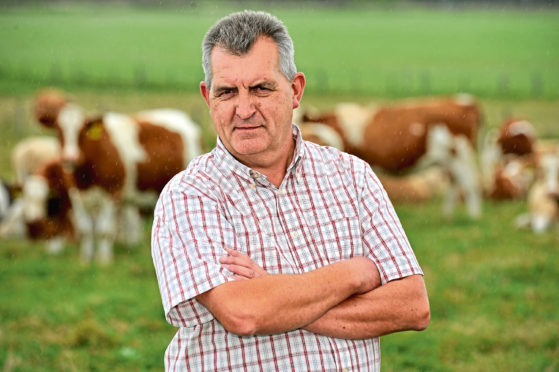In uncertain times, taking stock can make good business sense.
Over the last 10 years, Pitgaveny Farms has taken advantage of the Integrated Land Management Plan and its predecessor, the Whole Farm Review (WFR), to employ a professional consultant to assess the financial and physical condition of the business. These schemes identify business strengths, eliminate weaknesses, and take advantage of opportunities to build a business which is resilient to future threats, such as reduced production subsidies.
The original WFR carried out in 2013 concluded that cereal yields were variable and an average stocking rate of 1.43 livestock units (LU) per forage hectare was low on organically managed grass clover swards or conventional grassland capable of carrying stocking rates of 1.6 – 1.8 LU.
Implementation of technical advice in the report also produced higher and more consistent cereal yields. The advice included restricting high input wheat crops to the Grade 2 and Grade 3 land; growing wheat only after a break crop and avoiding sowing winter crops where there were likely to be areas of standing water over winter.
We also introduced a ‘straw for dung’ deal which now allows 12 tonnes per ha to be applied annually to 60% of the cereal area. The application of dung has allowed a 125kg per ha reduction in the compound fertiliser applied to treated crops.
Implementation of the complete advisory package has increased cereal yields by around 0.6 to 0.8 tonnes per ha.
After identifying the low stocking rate as a weakness, the additional support grant funded a series of visits by the consultant over the grazing season. He advised to alternate grazing with a twice cut silage system and selective topping of some grazing fields. This has dramatically reduced thistles on the organically managed grass/clover swards and addressing sulphur deficiency for an outlay of £7.40 per ha has transformed the establishment and productivity of our grass fields.
Organic grassland which previously carried 40 organic cows and 450 breeding ewes, now carries 40 cows and 900 ewes, allowing prime lamb production to out compete the wheat crop.
In 2017, we applied for an Integrated Land Management Plan to re-assess efficiency. As part of the analysis, the profit before subsidy was calculated for each enterprise on the farm.
The 60 ha of winter barley generated the lowest profit /ha when compared to others, with the best returns from the organic enterprise. We have since taken the decision to cut out winter barley and convert another 60 ha to organic production.
Big bale silage cutting dates will now be planned around stock performance requirements and we will continue to finish our conventional male calves on our intensive cereal system.
While seeking advice does come at a cost, support is available, and the returns from the changes implemented have more than justified the decision to review our business.
Martin Birse is farm manager at Pitgaveny Farms, Elgin, and NFU Scotland Highland region chairman.
